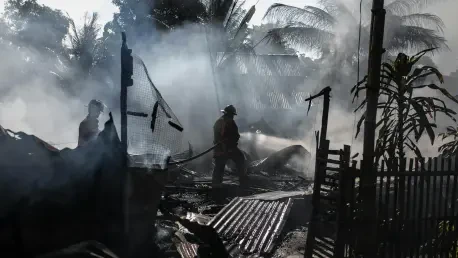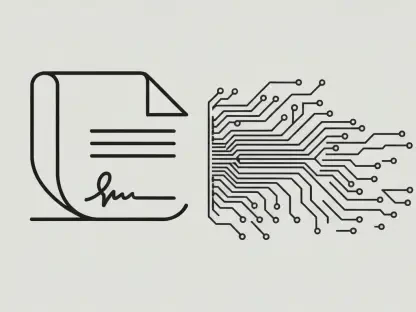The world is witnessing a steady increase in natural disasters, with 2025 showcasing a dramatic surge in both frequency and severity. As these disasters become more prevalent, a crucial question arises: who is responsible for the significant economic damages incurred? It’s a challenging query, especially since traditional insurance methods are increasingly proving insufficient in covering the vast financial losses associated with these catastrophic events. A revealing statistic indicates that uninsured losses globally have reached a staggering figure, highlighting the urgent need for new, collaborative approaches to disaster management. Communities worldwide continue to face the harsh realities of inadequate disaster response channels. For instance, when a powerful hurricane devastates a coastal city, the immediate impact is not just on infrastructure but also on the local economy and livelihoods. The economic ripple effect is as devastating as the hurricane itself, with many victims left without adequate financial support to rebuild. This scenario underscores the pressing need for innovative solutions in disaster response to mitigate such extensive economic losses.
The growing economic impacts and insurance struggles
The economic repercussions of natural disasters are increasingly burdensome, exacerbated by the limitations of contemporary insurance models. Compounding factors such as climate change, rapid urbanization, and surging population growth are further elevating the vulnerability of affected areas. These forces not only magnify the frequency of disasters but also increase the complexity of the situations faced. Insurance companies are struggling to keep up, as current models are inadequate in addressing the scope and magnitude of modern-day natural disasters. This situation is not an isolated problem but rather a global issue affecting both advanced and emerging economies. The inadequacy of insurance mechanisms to cover the soaring economic losses poses a threat that requires immediate acknowledgment and action. Addressing these matters is crucial for both local and global economies, as the implications are far-reaching and impact long-term economic stability.
Understanding the protection gap and exploring alternatives
The protection gap, which refers to the disparity between actual economic losses from disasters and the portion that insurance covers, continues to widen. Traditional insurance faces numerous challenges, including limited coverage availability and affordability for those most at risk. This gap suggests an urgent need for alternative approaches to risk management, such as parametric insurance and catastrophe bonds. These methods have shown promise in efficiently distributing risk and offering quicker disbursements following disasters. Embracing these alternatives has proven successful in several global cases. For example, in the Caribbean, parametric insurance has enabled quick financial recovery following hurricanes, as payouts are triggered by the event’s parameters rather than lengthy damage assessments. Similarly, catastrophe bonds have provided a backup financial safety net for governments to draw upon when a disaster hits, thus lessening the burden on traditional state resources.
Insights from experts and compelling real-world stories
Shigeru Ariizumi, chair of the International Association of Insurance Supervisors (IAIS), emphasizes the need for unified action involving a wide range of stakeholders, including governmental departments and policymakers. Expert insights draw attention to the necessity of developing strategies that go beyond conventional insurance frameworks, advocating for collaborative efforts between public and private sectors. The personal story of a resilient community leader in the Philippines, who pooled resources with local businesses and NGOs to establish a self-sustaining emergency fund, exemplifies the power of collaboration and innovative thinking. Recent research findings corroborate the effectiveness of these collaborative solutions. Studies indicate that disaster response systems incorporating joint efforts from diverse sectors can significantly reduce the protection gap. This approach is gaining traction, as illustrated by the IAIS’s ongoing exploration of cross-sector partnerships as a sustainable path forward in disaster risk management.
Practical strategies for collaboration
To effectively bridge the protection gap, concrete strategies for collaboration between the public and private sectors must be implemented. Integrating innovative insurance solutions with government risk-sharing initiatives is a viable way forward. For instance, establishing public-private partnerships can result in pooled financial resources aimed at specific risk areas, distributing the burden and enhancing resilience. Tailoring these solutions according to regional risk exposure and fiscal capacity is crucial. Different areas have unique vulnerabilities and advantages that can inform customized approaches to disaster management. By adapting strategies to local conditions, the effectiveness and sustainability of these innovative risk management methods can be maximized.
Conclusion: Toward a more united and resilient future
Effective disaster management requires a shift from isolated responses toward comprehensive and cooperative strategies. As the protection gap continues to grow, innovative approaches like parametric insurance and catastrophe bonds become more critical. The role of public-private partnerships and the engagement of stakeholders across sectors are increasingly evident as key components in advancing global disaster resilience. Looking forward, a commitment to collaboration, adaptability, and the embrace of alternative solutions ensures a more secure and resilient world in the face of escalating natural disasters.









